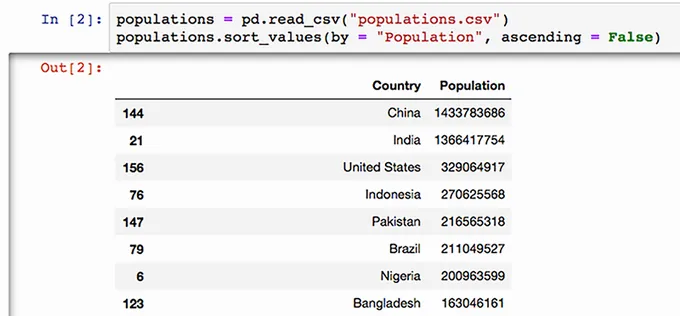
- 440 pages
- English
- ePUB (mobile friendly)
- Available on iOS & Android
Pandas in Action
About this book
Take the next steps in your data science career! This friendly and hands-on guide shows you how to start mastering Pandas with skills you already know from spreadsheet software. In Pandas in Action you will learn how to: Import datasets, identify issues with their data structures, and optimize them for efficiency
Sort, filter, pivot, and draw conclusions from a dataset and its subsets
Identify trends from text-based and time-based data
Organize, group, merge, and join separate datasets
Use a GroupBy object to store multiple DataFrames Pandas has rapidly become one of Python's most popular data analysis libraries. In Pandas in Action, a friendly and example-rich introduction, author Boris Paskhaver shows you how to master this versatile tool and take the next steps in your data science career. You'll learn how easy Pandas makes it to efficiently sort, analyze, filter and munge almost any type of data. Purchase of the print book includes a free eBook in PDF, Kindle, and ePub formats from Manning Publications. About the technology
Data analysis with Python doesn't have to be hard. If you can use a spreadsheet, you can learn pandas! While its grid-style layouts may remind you of Excel, pandas is far more flexible and powerful. This Python library quickly performs operations on millions of rows, and it interfaces easily with other tools in the Python data ecosystem. It's a perfect way to up your data game. About the book
Pandas in Action introduces Python-based data analysis using the amazing pandas library. You'll learn to automate repetitive operations and gain deeper insights into your data that would be impractical—or impossible—in Excel. Each chapter is a self-contained tutorial. Realistic downloadable datasets help you learn from the kind of messy data you'll find in the real world. What's inside Organize, group, merge, split, and join datasets
Find trends in text-based and time-based data
Sort, filter, pivot, optimize, and draw conclusions
Apply aggregate operationsAbout the reader
For readers experienced with spreadsheets and basic Python programming. About the author
Boris Paskhaver is a software engineer, Agile consultant, and online educator. His programming courses have been taken by 300, 000 students across 190 countries. Table of Contents
PART 1 CORE PANDAS
1 Introducing pandas
2 The Series object
3 Series methods
4 The DataFrame object
5 Filtering a DataFrame
PART 2 APPLIED PANDAS
6 Working with text data
7 MultiIndex DataFrames
8 Reshaping and pivoting
9 The GroupBy object
10 Merging, joining, and concatenating
11 Working with dates and times
12 Imports and exports
13 Configuring pandas
14 Visualization
Frequently asked questions
- Essential is ideal for learners and professionals who enjoy exploring a wide range of subjects. Access the Essential Library with 800,000+ trusted titles and best-sellers across business, personal growth, and the humanities. Includes unlimited reading time and Standard Read Aloud voice.
- Complete: Perfect for advanced learners and researchers needing full, unrestricted access. Unlock 1.4M+ books across hundreds of subjects, including academic and specialized titles. The Complete Plan also includes advanced features like Premium Read Aloud and Research Assistant.
Please note we cannot support devices running on iOS 13 and Android 7 or earlier. Learn more about using the app.
Information
Part 1. Core pandas
Series and the two-dimensional DataFrame. Chapter 1 begins with an analysis of a data set with pandas so you can immediately get a sense of what is possible with the library. From there, we proceed to an in-depth exploration of the Series in chapters 2 and 3. We learn how to create a Series from scratch; import it from an external data set; and apply a slew of mathematical, statistical, and logical operations to it. In chapter 4, we introduce the tabular DataFrame and various ways to extract rows, columns, and values from its data. Finally, chapter 5 focuses on extracting subsets of DataFrame rows by applying logical criteria. Along the way, we’ll work through eight datasets that cover everything from box-office grosses to NBA players to Pokémon.1 Introducing pandas
- The growth of data science in the 21st century
- The history of the pandas library for data analysis
- The pros and cons of pandas and its competitors
- Data analysis in Excel versus data analysis with a programming language
- A tour of the library’s features through a working example
1.1 Data in the 21st century
1.2 Introducing pandas


Table of contents
- Pandas in Action
- Dedication
- Copyright
- contents
- front matter
- Part 1. Core pandas
- 1 Introducing pandas
- 2 The Series object
- 3 Series methods
- 4 The DataFrame object
- 5 Filtering a DataFrame
- Part 2. Applied pandas
- 6 Working with text data
- 7 MultiIndex DataFrames
- 8 Reshaping and pivoting
- 9 The GroupBy object
- 10 Merging, joining, and concatenating
- 11 Working with dates and times
- 12 Imports and exports
- 13 Configuring pandas
- 14 Visualization
- Appendix A. Installation and setup
- Appendix B. Python crash course
- Appendix C. NumPy crash course
- Appendix D. Generating fake data with Faker
- Appendix E. Regular expressions
- index